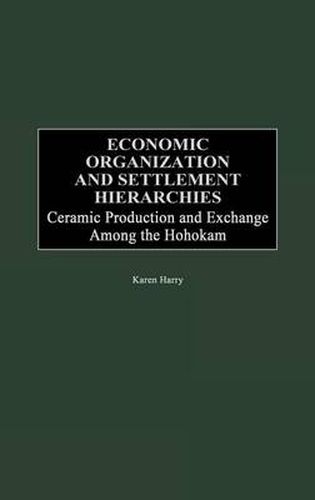Readings Newsletter
Become a Readings Member to make your shopping experience even easier.
Sign in or sign up for free!
You’re not far away from qualifying for FREE standard shipping within Australia
You’ve qualified for FREE standard shipping within Australia
The cart is loading…






The economic organization of two Hohokam communities, Marana and Los Robles, is studied here by examining the production and distribution of ceramics. The author looks at the degree of integration or interaction among residents of a single community, the relationship of community inhabitants with people living outside the community, and the significance of site hierarchies and differentially distributed artifacts. The study demonstrates that the economic organization of middle-range societies cannot be adquately interpreted using neo-evolutionary models, which assume a direct correlation between political organization, social complexity, and the organization of craft production and distribution.
Although much has been written about the economic organization of prehistoric settlement hierarchies, nearly all studies have based their conclusions on indirect evidence, such as settlement patterns and artifact distributions. In this study, economic organization is evaluated directly. Using compositional data obtained from the chemical and mineralogical analysis of decorated ceramics from the Hohokam communities of Marana and Los Robles, three issues are examined: (1) the degree of integration of interaction between residents of a single community; (2) the relationship of community inhabitants with people living outside the community; and (3) the significance of site hierarchies and differentially distributed artifacts. Through the investigation of these issues several contributions are made to the understanding of hierarchically organized settlement communities. Perhaps most importantly, the study demonstrates that differential distributions of artifacts need not indicate elite-controlled production and distribution. In addition, the importance of using direct evidence for modeling prehistoric economic organization is illustrated, rather than relying on indirect measures such as settlement patterns.
This study will be of interest to anyone studying prehistoric settlement hierarchies, the organization of craft production and distribution in middle-range societies, and ceramic production and exchange. The author’s conclusions add to a growing body of data indicating that middle-range societies cannot be easily categorized as either egalitarian or complex, as neo-evolutionary models would suggest. Instead, this study demonstrates that substantial variability can exist in the way that such societies are economically, socially, and politically organized, and that historical perspective must be incorporated into the interpretation of prehistoric communities if we are to understand why they were organized the way that they were.
$9.00 standard shipping within Australia
FREE standard shipping within Australia for orders over $100.00
Express & International shipping calculated at checkout
The economic organization of two Hohokam communities, Marana and Los Robles, is studied here by examining the production and distribution of ceramics. The author looks at the degree of integration or interaction among residents of a single community, the relationship of community inhabitants with people living outside the community, and the significance of site hierarchies and differentially distributed artifacts. The study demonstrates that the economic organization of middle-range societies cannot be adquately interpreted using neo-evolutionary models, which assume a direct correlation between political organization, social complexity, and the organization of craft production and distribution.
Although much has been written about the economic organization of prehistoric settlement hierarchies, nearly all studies have based their conclusions on indirect evidence, such as settlement patterns and artifact distributions. In this study, economic organization is evaluated directly. Using compositional data obtained from the chemical and mineralogical analysis of decorated ceramics from the Hohokam communities of Marana and Los Robles, three issues are examined: (1) the degree of integration of interaction between residents of a single community; (2) the relationship of community inhabitants with people living outside the community; and (3) the significance of site hierarchies and differentially distributed artifacts. Through the investigation of these issues several contributions are made to the understanding of hierarchically organized settlement communities. Perhaps most importantly, the study demonstrates that differential distributions of artifacts need not indicate elite-controlled production and distribution. In addition, the importance of using direct evidence for modeling prehistoric economic organization is illustrated, rather than relying on indirect measures such as settlement patterns.
This study will be of interest to anyone studying prehistoric settlement hierarchies, the organization of craft production and distribution in middle-range societies, and ceramic production and exchange. The author’s conclusions add to a growing body of data indicating that middle-range societies cannot be easily categorized as either egalitarian or complex, as neo-evolutionary models would suggest. Instead, this study demonstrates that substantial variability can exist in the way that such societies are economically, socially, and politically organized, and that historical perspective must be incorporated into the interpretation of prehistoric communities if we are to understand why they were organized the way that they were.